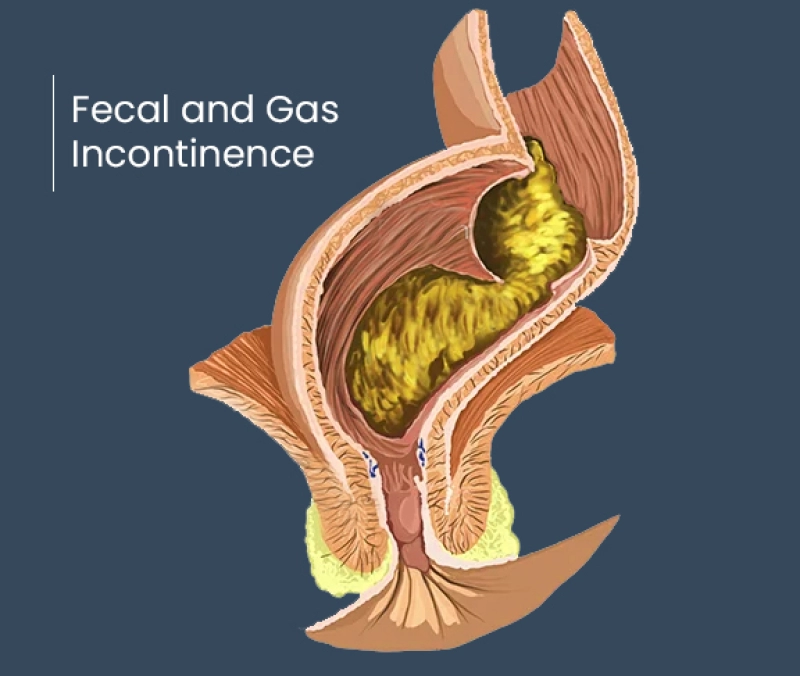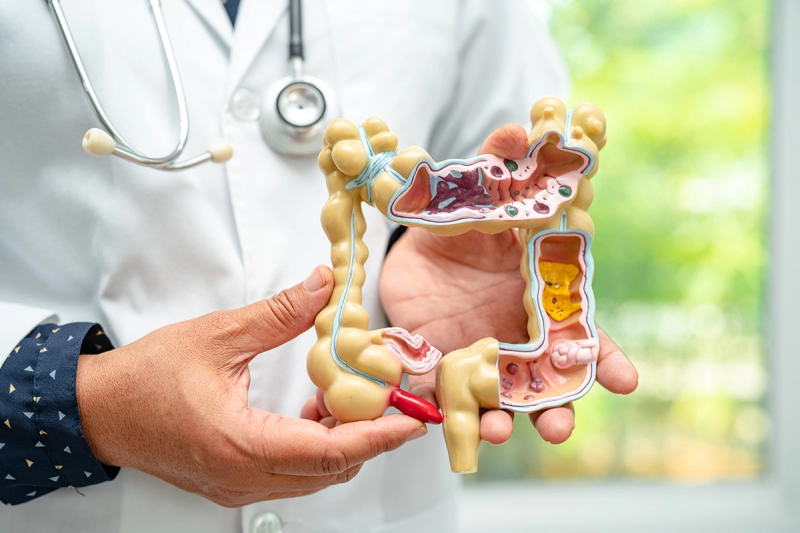

Understanding and Addressing Fecal and Gas Incontinence: A Comprehensive Guide
 Life's most basic functions are often taken for granted, yet when they are disrupted, daily life can be drastically impacted, leading to emotional, social, and psychological struggles. One of these key functions is the control over bowel movements, an issue that affects a surprisingly high number of individuals across various age groups and backgrounds. Contrary to common perceptions, fecal incontinence (FI) and gas incontinence are significant health concerns that deserve more attention and understanding, not only from the medical community but from the wider public.
Life's most basic functions are often taken for granted, yet when they are disrupted, daily life can be drastically impacted, leading to emotional, social, and psychological struggles. One of these key functions is the control over bowel movements, an issue that affects a surprisingly high number of individuals across various age groups and backgrounds. Contrary to common perceptions, fecal incontinence (FI) and gas incontinence are significant health concerns that deserve more attention and understanding, not only from the medical community but from the wider public.
In this in-depth guide, we unravel the complexity of FI and gas incontinence, demystifying misconceptions and offering insight into the causes, effects, and, most importantly, the advanced treatment options available for these conditions. Whether you are a patient seeking clarity or a medical professional looking to expand your knowledge, the information provided here is designed to be authoritative and comprehensible, drawing on the latest research and clinical experience.
---
The Unseen Burden: Prevalence and Real-life Impact of Fecal Incontinence
Epidemiological evidence suggests that fecal incontinence affects a significantly larger segment of the population than commonly recognized. Prevalence rates vary due to underreporting and the sensitive nature of the condition, but studies consistently find that it is not exclusively an issue of the elderly, as often presumed.
Younger individuals, particularly women who have given birth, and those with certain health conditions, are also at risk. The impact goes beyond physical discomfort, with many sufferers experiencing social isolation, depression, and a diminished quality of life.
Digging Into the Numbers
The latest data reveals shocking figures, indicating that between 2% and 24% of the general population may suffer from fecal incontinence, making it a surprisingly common problem. However, due to stigma and patients’ reluctance to discuss symptoms, many more cases go unreported and untreated.
Who's At Risk?
While fecal incontinence is often linked with aging and childbirth, it can affect anyone at any stage of life. Factors such as gastrointestinal diseases (Crohn's disease), nerve damage, and cognitive impairment can elevate the risk. Understanding these variables is crucial for early intervention and support.
The Underlying Cause: Demystifying Fecal and Gas Incontinence
Understanding the root cause of these conditions is the first step towards effective management and treatment. Incontinence can occur due to a wide array of factors, ranging from mechanical issues in the colon and rectum to neurological conditions that disrupt the messages between the brain and the bowels.
The Biochemical Dance of Digestion
A complex series of muscular contractions in the rectum and anal sphincter manage the expulsion of waste. If any part of this natural process is compromised, it can lead to loss of control over bowel movements, ranging from occasional leakage to complete loss of control.
Chronic Conditions and the Microbiome
Chronic constipation not only affects bowel motility but can also have a direct association with the onset of fecal incontinence. The gut microbiome, when destabilized by various factors, can aggravate symptoms, further complicating the management of the condition.
The Nerve of the Matter
A frequent culprit is damage to the intricate network of nerves that run from the spine to the bowels. Diseases like multiple sclerosis, diabetes, or spinal cord injury can interrupt the neural pathways responsible for signaling the need to go to the bathroom and controlling the release of feces and gas.
Confronting the Stigma: Why Fecal Incontinence Is Underreported
Despite its relatively high prevalence, fecal incontinence remains a highly stigmatized and underreported condition. Many patients endure their symptoms in silence, often for years, before seeking help. Understanding the reasons for this silence is crucial to providing better support and care.
The Weight of Social Stigma
Fecal incontinence is not just about physical symptoms; it is laden with social implications. Embarrassment, fear of isolation, and the impact on a person's self-image contribute to the hesitancy in seeking medical advice. Healthcare professionals need to provide a judgment-free environment to encourage open dialogue.
The Misconception That It's Inevitable
For the elderly, and particularly those in long-term care, there is a misconception that incontinence is a natural part of aging with no effective remedies. This belief further adds to the normalization and underreporting of the issue.
Cultural Impacts
Cultural attitudes about bodily functions vary and can influence an individual's perception of incontinence. Cultures that are more conservative may have stronger taboos against discussing such issues openly.
The Road to Recovery: Treatment Modalities for Fecal and Gas Incontinence
There is hope for those living with fecal and gas incontinence. Advances in medical science have led to a range of treatment options aimed at managing and often resolving these issues. From conservative dietary and behavioral changes to invasive surgical procedures, the approach is tailored to the patient's specific condition and needs.
Conservative Approaches
Initial interventions often revolve around lifestyle changes, dietary modifications, and physical therapy aimed at improving bowel habits and strengthening pelvic floor muscles. These methods have shown significant improvements for many patients without the need for more aggressive treatments.
Pharmaceutical Support
In some cases, medications that alter bowel function, such as improving consistency or slowing transit time, can assist in managing symptoms. Nonetheless, these are usually adjuncts to behavioral and dietary strategies rather than standalone treatments.
Minimally Invasive Interventions
Certain minimally invasive procedures, such as injectable bulking agents and Sacral Stimulation, have gained traction for their effectiveness in select patient populations. These treatments focus on enhancing the muscular and neurological functions involved in bowel control.
The Last Resort: Surgical Options
For individuals with severe, intractable fecal incontinence, surgery may be the last available option. Procedures such as sphincter repair or replacement and colostomy creation can significantly improve or resolve symptoms but come with their own set of considerations and recovery plans.
Exploring Sacral Stimulation: A Leading Edge Treatment for Incontinence
A beacon of hope for many patients is sacral nerve stimulation, a minimally invasive, reversible technique that is rapidly becoming a gold standard in treating fecal incontinence. This procedure, also known as sacral neuromodulation, aims to regulate and restore normal bowel functions by modulating the sacral nerves.
How It Works
Sacral stimulation involves the implantation of a small device that sends mild electrical impulses to the sacral nerves, which control the bowel and the pelvic floor muscles. By fine-tuning these signals, patients can experience improved sensation and control over their bowel movements.
The Test Phase
One of the significant advantages of sacral stimulation is the initial test or trial, which allows patients and their medical teams to assess the potential benefits before committing to a long-term implant. This phase offers invaluable information and peace of mind for individuals considering the treatment.
Success Rates and Considerations
Studies have shown that sacral stimulation can achieve success rates as high as 86% when performed by experienced practitioners. However, success is contingent on careful patient selection and comprehensive preoperative evaluation, which may include specialized imaging and testing.
Beyond Incontinence: Sacral Stimulation's Role in Chronic Constipation and Involuntary Gas Leakage
Fecal incontinence is not the only condition that sacral nerve stimulation can address. The procedure has shown promising results in the management of chronic constipation and even involuntary gas leakage, underscoring its applicability to a wide spectrum of bowel-related dysfunctions.
Chronic Constipation Relief
For individuals with chronic constipation unresponsive to traditional treatments, sacral stimulation can offer a viable solution. This is especially significant for patients who have exhausted conservative measures and are not candidates for more invasive surgical options.
Gas Incontinence Treatment

Involuntary gas leakage, a condition that can be equally disruptive and stigmatizing, can also be effectively managed with sacral nerve stimulation. By helping to regulate the sphincter muscles of the rectum, patients can experience reduced gas-related symptoms and a significant improvement in their daily lives.
For those seeking more in-depth information on sacral stimulation treatment and its implementation, our comprehensive article provides a detailed evaluation of this cutting-edge procedure. You can access this resource by visiting the "Sacral Stimulation" link located under our "Surgeries" section or by clicking here. This article aims to furnish patients, caregivers, and healthcare professionals with authoritative,clinical insights, enabling informed decisions about managing incontinence and related conditions through Sacral Nerve Stimulation.
The Outlook: Advances in Fecal Incontinence Treatment and Hope for Patients
Fecal incontinence is a challenging condition, but it is not insurmountable. With a growing body of knowledge and an expanding arsenal of treatment options, patients can look to the future with a renewed sense of hope and possibility.
Bridging the Awareness Gap
Awareness and destigmatization are critical in the fight against fecal incontinence. By educating both the public and healthcare professionals, we can create a more supportive environment for patients in need of assistance.
An Evolving Landscape
The field of incontinence management is a dynamic one, with ongoing research and technological advances continually enhancing our understanding and treatment capabilities. Focus on interdisciplinary collaboration, patient-centered care, and cutting-edge therapies promises an even brighter future for those affected by fecal incontinence.
In conclusion, fecal incontinence and gas leakage are not just medical issues; they are human experiences that demand compassion, understanding, and effective treatment. This guide has aimed to provide an in-depth look into these conditions, highlighting the breadth of their impact and the depth of options available for those seeking help. By addressing the issues with clarity, empathy, and a commitment to ongoing education, we can create a world where dignity and well-being extend to all aspects of human health.
last edited on 01.08.2024